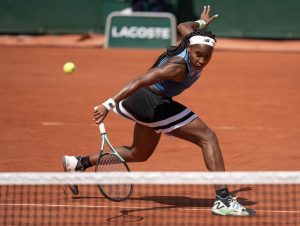The men’s event at Roland Garros finished just a week ago but like any Grand Slam, there’s still a lot to look into and analyze. Throughout the years many questions have always been asked about final sets in Grand Slams, does the player who serves first win a majority, or how about if the winner of the fourth set usually goes onto win the fifth. Using data obtained during the final Grand Slam of the year, we can answer a few of these.
How many matches went to a fifth set?
To begin, there were only 21 fifth sets played at Roland Garros this year, that’s out of a total 127 matches, that’s just 16.54% of matches going the distance. What’s more remarkable is that from Round 3 to the end of the event there were only four five setters (just a single one each in R3, R4, QF and SF). We should be very grateful to Frenchman Hugo Gaston and world number three Dominic Thiem for both contributing twice including their epic match against one another which ended with an Austrian win.
Did the higher ranked player win?
Perhaps to the shock of many, the higher ranked opponent won just over half the matches at 11 of the 21 matches (52.38%). There is also no real pattern per round, in the first round 7/12 matches were won by the man ranked higher, 2/5 in the second, 0/1 in R3, 1/1 in R4, 0/1 in the quarter-finals and 1/1 in the semi-finals.
Did the winner serve first in the fifth?
Even 11 years on people still debate whether or not Andy Roddick would have won the Wimbledon title had he served first in the final set against Roger Federer. There’s no doubt by serving second he was constantly under more pressure but whether that changed the outcome of the match or not, we’ll never know.
Just like the previous question asked, the evidence from Roland Garros is inconclusive, this time 12/21 winners serving first in the fifth (57.14%). Coincidence or not, the five round 2 matches which went the distance were all won by the man who started the final set.
Did the winner win the fourth set?
Finally, we have some evidence which far more statistically significant. Just seven winners of the fourth set went onto go and win the match in the fifth, just seven. The other 14 times the man who lost the fourth set went onto win the fifth, pretty amazing when you think about it. You would think all the momentum would be with the player who’s just taken the match to five such as this year’s Australian Open final where Novak Djokovic won from two sets to one down or in New York just over a month ago where Dominic Thiem won his maiden Grand Slam from two sets to love down, but clearly not. On the other hand, if you look at many epic matches from the past such as the 2012 Australian Open final, 2013 Roland Garros semi-final and of course last year’s Wimbledon final, the man who lost the fourth set has gone onto win all, so possibly going into the final set having just won the previous set isn’t the best thing a player can do.
Which sets did the winner win?
Before Rafael Nadal putting in one of his best ever career performances to destroy Novak Djokovic, the previous four Grand Slam finals were all won in fifth sets with different sets won by the winner.
Wimbledon 2019 – WLWLW
US Open 2019 – WWLLW
Australian Open 2020 – WLLWW
US Open 2020 – LLWWW
With this in mind, I thought it would be worth looking at the 21 matches we have data for and seeing the breakdown of these matches. What we have is as follows:
LWWLW – 6
WWLLW – 5
LLWWW – 3
WLWLW – 3
WLLWW – 3
LWLWW – 1
In 11 of 21 instances, the winner won the first set, once again, barely past the halfway mark. What is most surprising is that the most common occurrence was with the winner losing the first set, while the second was with the winner going two sets up before eventually winning in five sets. The winner coming back from two sets down was featured the third most with all three coming in the first round, not shocking as two featured two current top ten players (Tsitsipas and Rublev) against far lower ranked opponents.
When setting out to find out this information, I will admit I did expect to see significant trends, whether this is because of the small sample (one Grand Slam) or the lack of matches going to five sets I am yet to find out. Either way, if this was interesting to you please reply below in the comments so I know people want to see content like this and can expand my data further for more reliable and accurate results, possibly on all three Grand Slams this year combined.
Main Photo:






